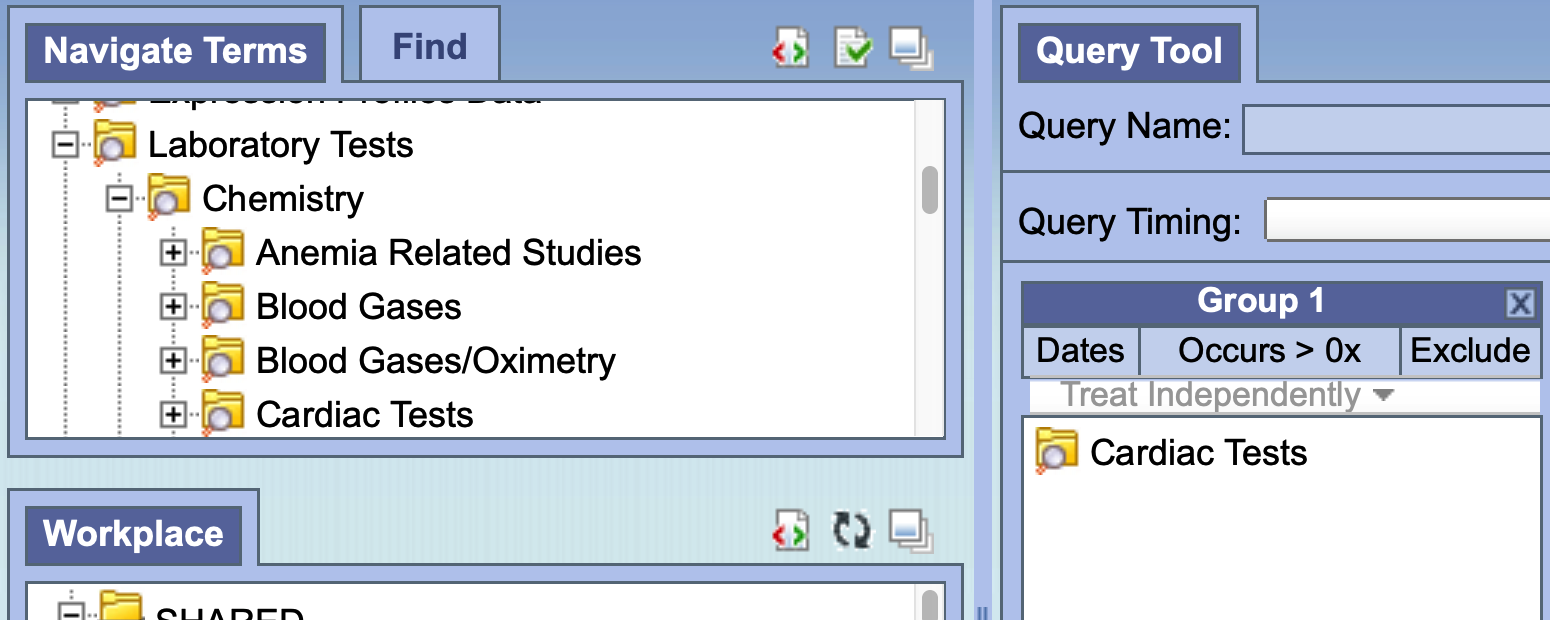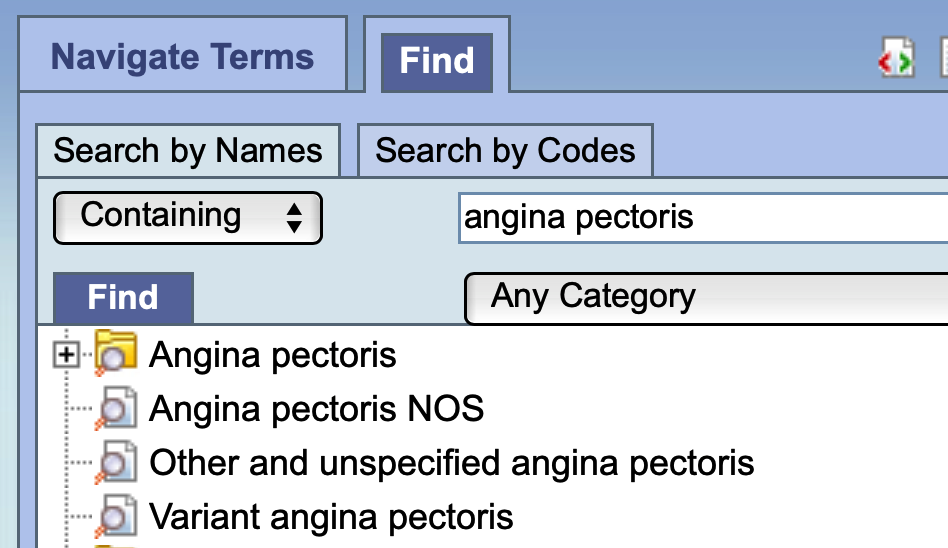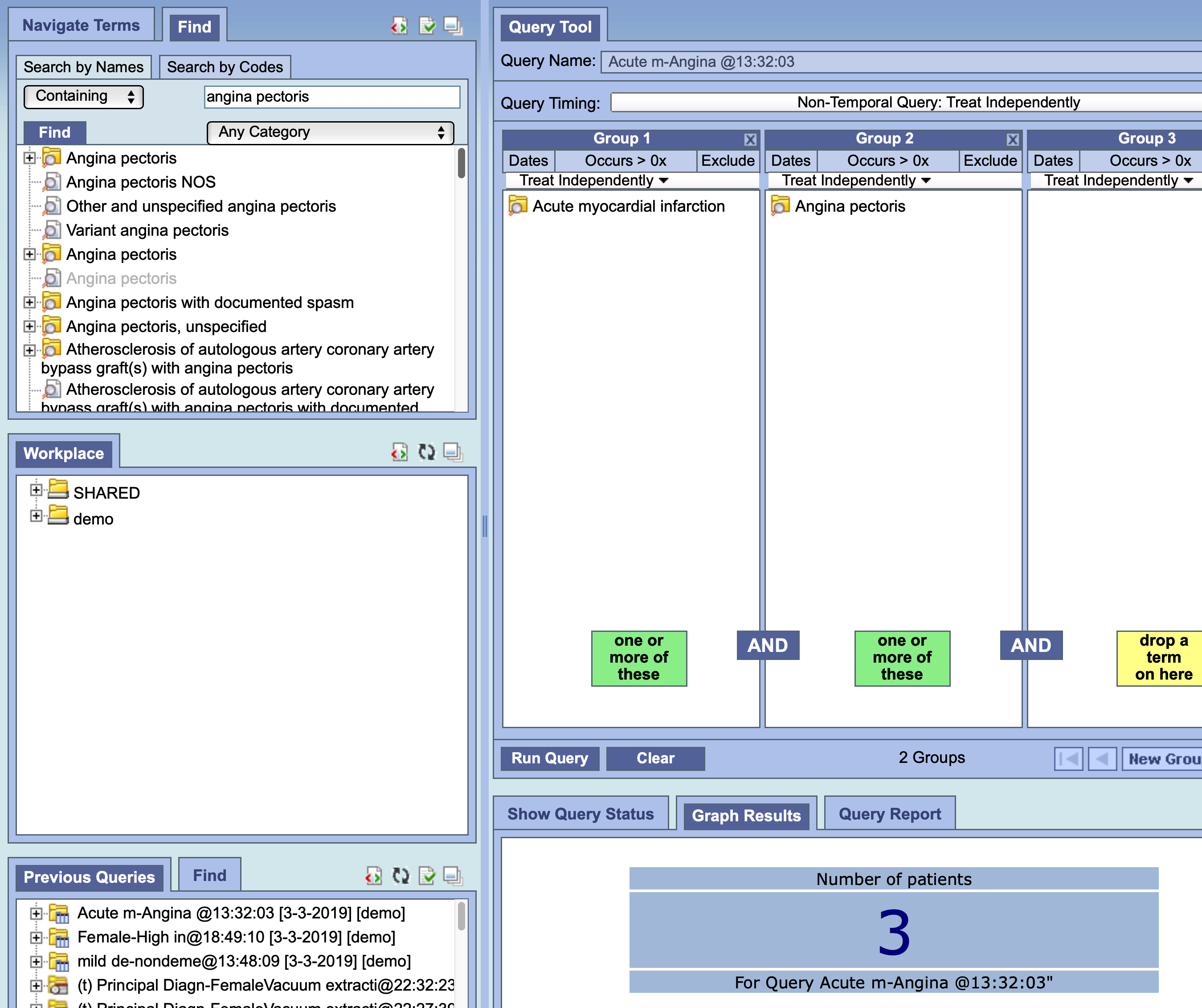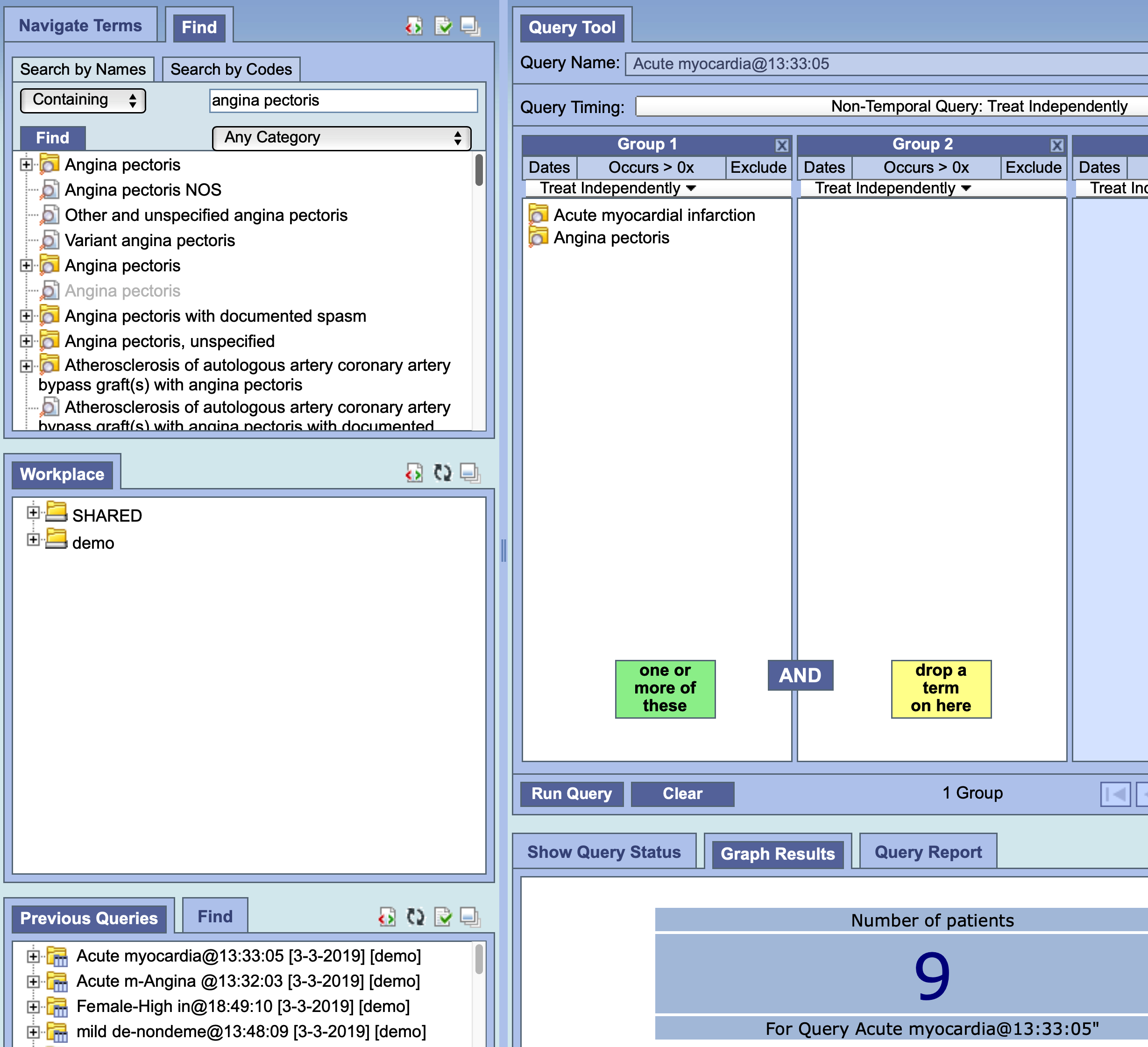Page History
...
| Example Box | ||||||||||
|---|---|---|---|---|---|---|---|---|---|---|
| ||||||||||
Quick Links
|
Creating the Query
In order to create your query, you will need to define what information will be retrieved from the databases. Selected items from other i2b2 Web Client views can be dragged and dropped (copied) into the Query Tool view. Below is a list of the various items that can be dragged and dropped in to the Query Tool as you create your query:
Concepts and Concept Folders
Modifiers and Modifier Folders
Previous Queries
Patients and Patient Sets
...
To Create a query, locate the item or items that you would like to query from the Terms Panel, Workplace or Previous Queries. Drag these items in to a Group Panel.
Select a Folder or Item.
For example, From Navigate Terms Panel (#1) select Laboratory Tests and then Chemistry
...
This Group 1 Panel now contains the term that will be used during the process of querying the database.
Find Terms View
The Find Terms view provides a way to search for a particular concept.
NOTE: For detailed information on how to search for terms, please click on the Find Terms section. |
Add Concept From Find Terms View
In the Find Terms view, search for the item(s) you want to add.
...
The item will now display in the panel for Group 1.
Group Information Box
The content of the information box for each Group Panel will change depending on whether or not a term is listed in the panel / group.
...
IMPORTANT: The query tool knows which operator to use based on the panels used when defining the query. It is important to verify you are setting up your query correctly as each operator will return different results. |
The AND Operator
The AND operator returns a record if both the first condition and the second conditions are true. The query tool uses the AND operator when concepts are listed in different Group panels.
...
RESULT: The population is limited by requiring the patients fulfill both requirements. In this case using a sample database, there were only 3 patients who had BOTH conditions.
OR Operator
The OR operator returns a record if either the first condition or the second conditions are true.
...



